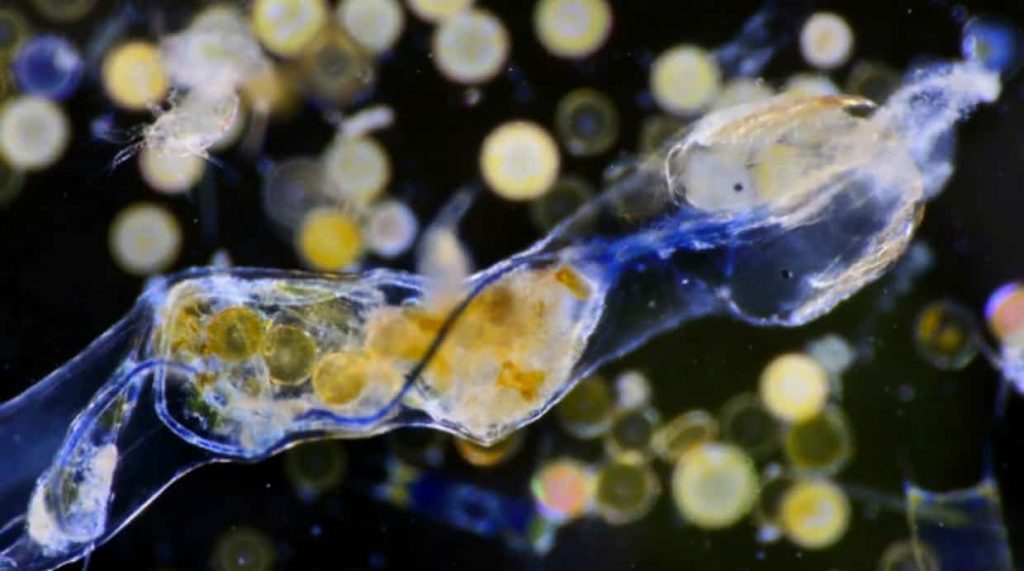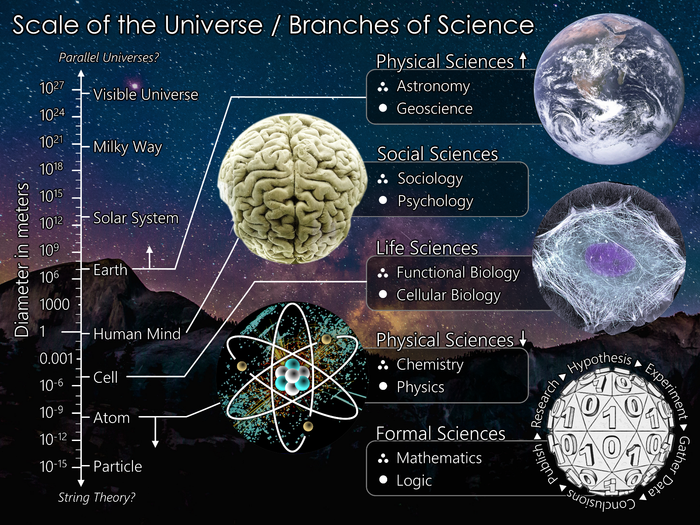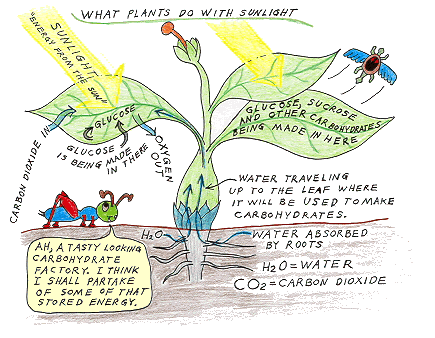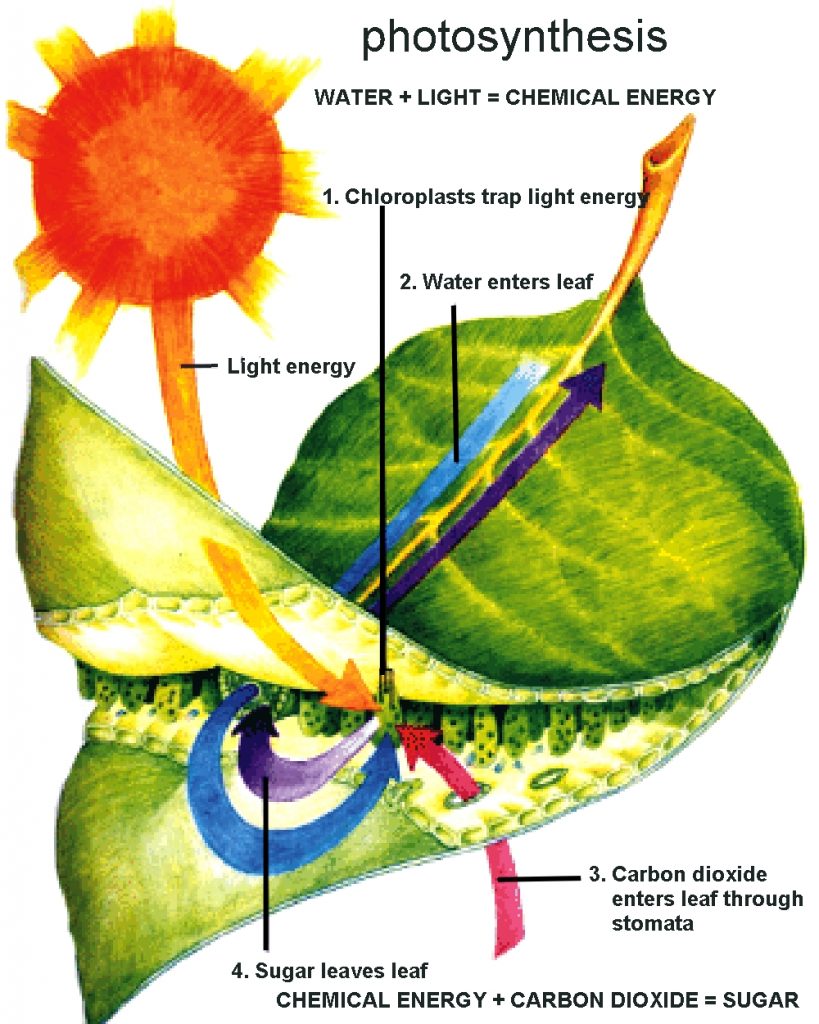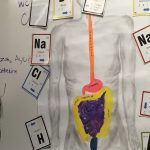New study highlights the extent of plastic contamination in tap water world wide – learn more
Plankton arrow worm, Sagitta setosa, as seen with a blue plastic fibre in it’s gut. The fibre is approximately 3 mm long. Plankton is at the base of the food chain. This plastic fibre is transferred along the food chain.
Current standard water treatment systems do not filter out all of the microplastics, Mahon said: “There is nowhere really where you can say these are being trapped 100%. In terms of fibres, the diameter is 10 microns across and it would be very unusual to find that level of filtration in our drinking water systems.”

